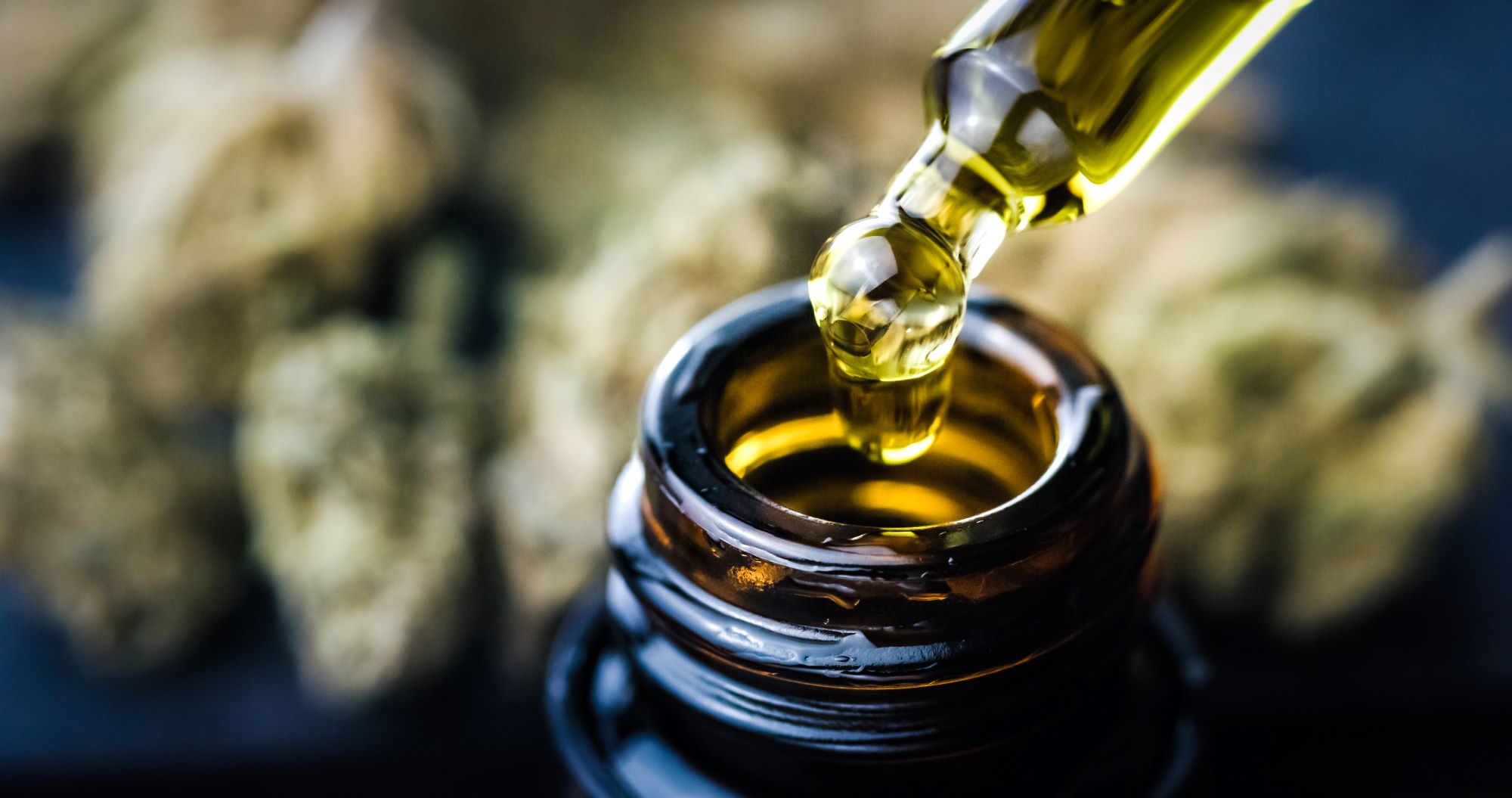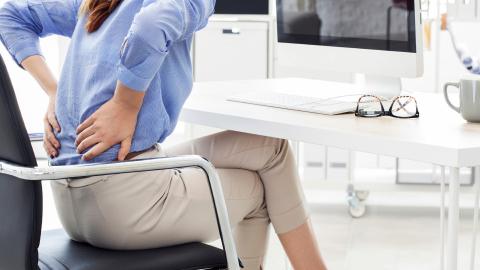What is the scope of the regulation?
According to the Ministry of Health, the Royal Decree will establish "the conditions for the elaboration and dispensation of compounded medications based on standardised cannabis preparations".
For which illnesses could cannabis be used?
The ministry says the regulation will focus on certain patients affected by a small number of “serious or incapacitating illnesses". "The target indications will be epileptic seizures that are refractory to all medicines authorised for these indications" as well as "refractory spasticity [muscle stiffness] in multiple sclerosis, refractory neuropathic pain and nausea refractory to antiemetics authorised in oncology", wrote Spain’s Organización Médica Colegial (OMC) on 14 February, referring to a meeting with the Spanish Agency for Medicines and Health Products (AEMPS) and the ministry. The adjective 'refractory' is important here: these are patients who have already tried other types of available treatments, without finding relief.
"The target population is not just anyone, they are very vulnerable and highly debilitated” patients, especially those with cancer and neurological diseases, Manuel Guzmán, professor of Biochemistry and Molecular Biology at the Complutense University of Madrid, tells the SMC Spain. Guzmán researches the molecular mechanisms of cannabinoids in the body and is also vice-president of the Spanish Observatory of Medical Cannabis, an organisation that advocates for the medical use of cannabis.
Meanwhile, José Carlos Bouso, scientific director of the International Center for Ethnobotanical Education, Research and Service (ICEERS), an NGO based in Barcelona, argues that the regulation should be as “generous” as possible. It "should not be limited" to specific indications, but rather aim to "improve the quality of life" of people with chronic diseases who suffer from persistent pain, stress and anxiety, says Bouso (who also authored the book El cannabis, de droga prohibida a solución terapéutica, 2019).
What does the scientific evidence say about the medical use of cannabis?
The indications mentioned in the government's draft seem to be in line with the conclusions of a large study that reviewed 101 previous meta-analyses, published in August 2023 in BMJ, and coauthored by Eduard Vieta, head of the psychiatry service at the Hospital Clínic in Barcelona. The article concluded that “cannabis based medicines are effective in people with multiple sclerosis, chronic pain, inflammatory bowel disease, and in palliative medicine but not without adverse events,” and that cannabidiol, a component of cannabis, is effective in people with epilepsy.
As for mental health, "there is little evidence to suggest that cannabinoids improve depressive disorders and symptoms, anxiety disorders, attention deficit hyperactivity disorder, Tourette's syndrome, post-traumatic stress disorder or psychosis," according to a document from the College of Doctors of Catalonia (CoMB) titled Decalogue on health and cannabis [PDF in Catalan].
In general, there is a lack of double-blind, placebo-controlled and randomised clinical studies, said Rafael Maldonado, professor of pharmacology at the Universitat Pompeu Fabra in Barcelona, at a public event organised by the CoMB on 29 January.
What are cannabinoids?
Cannabinoids are chemical compounds that bind to cannabinoid receptors in the human body to transmit messages between cells. There are three types of molecules:
- Endocannabinoids, or endogenous cannabinoids, which are produced by the human body itself.
- Phytocannabinoids, which are found in the cannabis plant and can be introduced into the body by various routes, such as ingestion or inhalation. This group includes:
- Tetrahydrocannabinol (THC), the active compound responsible for the main psychotropic effects of the plant.
- Cannabidiol (CBD), which has no addictive power.
- 100 other compounds identified to date.
- Neocannabinoids or synthetic cannabinoids are compounds generated in the laboratory that do not exist in the environment.
What is the endocannabinoid system and how does it relate to pain?
The endocannabinoid system consists of a group of endogenous cannabinoid receptors, located in the brains of humans and other mammals such as dogs, and the cannabinoids that bind to these receptors. This system is involved in the regulation of several physiological processes, such as pain, appetite, memory, sleep and the cardiovascular system.
What cannabis-based products already exist for medical use in Spain?
Two medicines containing cannabis extracts are authorised for sale in Spain. These products have followed the usual authorisation procedures for medicines manufactured industrially, and they require a prescription for specific indications:
- Sativex, an oral spray solution containing dronabinol and cannabidiol, can only be prescribed by specialist doctors to people over 18 with multiple sclerosis to relieve symptoms related to spasticity. "Sativex is used when other medicines have not helped to improve muscle stiffness," explains the AEMPS, which authorised the drug in 2010, in its information leaflet.
- Epidyolex, an oral solution containing cannabidiol, is prescribed to treat epilepsy, a condition that causes seizures or convulsions and can be used in adults, adolescents and children from the age of two. In combination with other anti-epileptic drugs, it is also indicated to treat seizures due to two rare syndromes (Dravet syndrome and Lennox-Gastaut syndrome) and a genetic disease called Tuberous Sclerosis Complex.
Nabilone and dronabinol have also been authorised for importation "in exceptional cases of multiple sclerosis or as an antiemetic in cancer treatments".
The Royal Decree project launched by the Ministry of Health focuses on a different type of product: compounded medications. These are prepared for a specific patient by pharmacy professionals under medical prescription, which allows the dose to be adjusted individually. According to the OMC, the new regulation would focus on cannabis oil containing only THC and CBD, available in "various combinations, without impurities from other substances" and prepared "exclusively in pharmacy services within hospitals".
The CoMB Governing Board, however, argues in its Decalogue that any cannabis-derived substance should follow the pre-marketing evaluation and approval process by regulatory agencies, like medicines produced industrially.
Can these products make patients 'high'?
Like all medicines, cannabis-based drugs or preparations can cause side effects that depend on the exact composition of the product. For example, taking Epidyolex (one of the drugs authorised in Spain) "will not get you high, because it does not contain THC,” says the English National Health Service (NHS) on its website.
‘Giddiness’ does stand on the the list of common adverse effects (affecting less than 1 in 10 patients) for Sativex, the other drug authorised in Spain, which also mentions memory or concentration problems, sleepiness and loss of balance.
Are cannabis based medicines addictive?
Yes, they can be. “Long-term use of high dosages of cannabis can create dependency,” warns a Dutch government information leaflet on medical cannabis. "Stopping the treatment can lead to the development of withdrawal symptoms such as restlessness, irritability, insomnia and nausea,” the leaflet adds. However, Guzmán points out that withdrawal symptoms are usually more moderate with cannabinoids than with other drugs such as benzodiazepines (the family of sedatives, sleeping pills and anxiolytics that includes Valium).
There also is a phenomenon called tolerance: the body gets used to the consumption and, after a period of regular use of the product, higher doses are required to feel the same effects. "This is why rest periods are recommended," Guzmán says. Tolerance is "usual and reversible", says the researcher: the cannabinoid receptors in the brain are occupied by cannabinoid compounds, which have to be eliminated to recover sensitivity.
In its Decalogue, the Medical Association of Catalonia says that "the adverse effects of cannabis, including the likelihood of addiction, should always be assessed on an individual basis" by a health professional.
Are there other risks to human health?
In general, Eduard Vieta warns that the adolescent population is more vulnerable to cannabis use and that its use should be completely avoided in pregnant women and drivers. In addition, the specialist stressed at the CoMB meeting that its use can increase the risk of psychosis in the general population—that is, not only in people with a history of mental disorders.
Maldonado (who co-authored a 2020 review on the health harms related to cannabis use) told the same event that the adverse effects linked to non-medical cannabis use are often different from those linked to medical use. Among possible adverse effects, the leaflet for Epidyolex mentions two “very serious” ones: liver damage and having “thoughts of harming or killing themselves”. The Sativex leaflet also mentions possible thoughts of suicide, hallucinations, feeling depressed or losing touch with reality.
Guzmán also recommends caution in patients with a history of cardiovascular disease. "Cannabis causes hypotension and the heart compensates by pumping more," he explains.
Could authorising the use of medical cannabis lead to more non-medical use (so-called "recreational" use)?
Some medical doctors do fear this. In its Decalogue, the CoMB board "expresses its concern about the trivialisation and, in some cases, a certain normalisation" of the use of legal and illegal drugs. In their public event (video in Catalan here), Vieta said he hoped that "the medicinal use of cannabis would not to be the back door to facilitate the use of cannabis in the general population."
"The best way to see if there has been a correlation between the legalisation of cannabis for medical purposes and its non-medical use is to check the statistics on prevalence of use country by country where [legalisation of medical use] has occurred—and at least in Europe, this does not seem to be the case," Bouso tells the SMC Spain. He adds that when assessing the balance of risks and benefits, one also has to consider the social risks of not having a legal framework.
A study published in 2021 estimates that, between 2010 and 2019, the percentage of European adults who say they have used cannabis in the past month increased from 3.1% to 3.9%, with the largest relative increase in people aged 35-64. In the following years, "trends in cannabis use at national level appear mixed", says a report published in 2023 by the European Monitoring Centre for Drugs and Drug Addiction (EMCDDA), an agency of the European Union. Of the countries that have conducted surveys since 2020, three reported an increase in use since 2020, three remained stable and six reported a decrease.
There are also studies in other countries assessing the possible impacts of medical use regulations, not only on cannabis use in general, but also on the use of other substances or on road traffic accidents, for example. They often have “contradictory outcomes or inconclusive results," warned another EMCDDA report in 2018.
"Research suggests [medical cannabis laws] increase adult but not adolescent cannabis use, and provisions of the laws associated with less regulated supply may increase adult cannabis use disorders," said another 2019 study in the US. But one should be cautious about extrapolating results from the US—where rules may be less restrictive than those contemplated here—to other countries with different historical, social and legal contexts.
What is the current legal framework?
In 2020, the United Nations Commission on Narcotic Drugs removed cannabis from Schedule IV of the 1961 Single Convention on Narcotic Drugs, where it was listed alongside heroin. Countries were divided, with 27 votes in favour, 25 against and one abstention. This “opened the door to recognising the medicinal and therapeutic potential of the drug, although its use for non-medical and non-scientific purposes will continue to remain illegal,” the UN said in a press release at the time.
In Spain, the 2015 Law on Guarantees and Rational Use of Medicines and Health Products includes an article on the use of medicinal plant medicines and a chapter on health guarantees for compounded preparations; it does not mention cannabis.
In June 2022, a Subcommittee of the Congress of Deputies approved a report [PDF] on the medical cannabis regulation, in which it issued recommendations and asked the AEMPS to do the necessary work to prepare a regulation.
What does the law say in other countries?
In recent years, several governments around the world have introduced laws and regulations towards a standardisation of medical cannabis use; in its press release, Spain’s Ministry of Health mentioned Portugal, the UK and Norway.
There is a spectrum of more or less restrictive legislation at the national level. ICEERS has a map on its website that summarises the situation by country. Many factors can vary: the breadth of authorised medical indications; the types of professionals who can prescribe cannabis (specialist doctors only, or GPs); the places of dispensation (e.g. regular pharmacies or only hospital pharmacies); the types of products and their routes of administration (oils for oral use, herb or flowers for infusions, or for vaporisation and inhalation); the possibility of reimbursement of cannabis by the health system or insurance companies, etc.
Is there research in Spain on the use of medical cannabis?
Yes. Along with the United Kingdom and Italy, Spain is one of the strongest countries in this field of research since the 1980s, according to Javier Fernández Ruiz, professor in the Department of Biochemistry and Molecular Biology at the Faculty of Medicine of the Complutense University of Madrid. "We were pioneers in basic research with cells, animal models, and then with a strong vocation for translational research" to pass these findings on to the clinic, Fernández tells the SMC Spain. To carry out their studies, laboratories can obtain public funding at the national or international level, and they can buy pure compounds supplied by chemical companies—with certain rules to control the amounts they use and handle the substance according to specific rules, he explains.
"As a researcher, my position is very clear in favour of medical cannabis", separating it from so-called recreational use, says the researcher. The professor recalls that, during public events, he has been approached by patients asking which cannabinoid profile would be the most useful for a particular disease. "I am waiting for the regulation so that I can bring solutions to patients," he says.
Can cannabis be grown legally in Spain?
Yes, by authorised companies. In 2024, Spain is set to reach the 7th position in the world ranking of medical cannabis production, as reported by the newspaper Público on 29 January, with a production forecast of 36 tonnes, mostly destined for export. This figure represents an increase of 53% compared to 2023, "a year in which the yield of cultivation with administrative authorisation had already quadrupled," wrote the newspaper.
Here are the authorisations issued by the AEMPS for the cultivation of cannabis plants, at the time of writing:
- 16 for research purposes.
- Six for the production and/or manufacture of cannabis and its products for medical and scientific purposes.
- Three for obtaining the necessary batches for the validation of the manufacturing process of narcotic active ingredients for medical purposes.
Other useful resources:
Medical use of cannabis and cannabinoids: questions and answers for public policy making, published by the EMCDDA (2018). Companion technical report summarising the evidence on the efficacy and safety of the medical use of cannabis and cannabinoids, led by Wayne Hall from the University of Queensland in Australia.
This document highlights three studies:
- US National Academies of Sciences, Engineering, and Medicine report published in 2017.
- Article by Whiting et al. (2015), funded by the Swiss government and published in JAMA.
- Article by Koppel et al. (2014), published by the American Academy of Neurology in Neurology.




